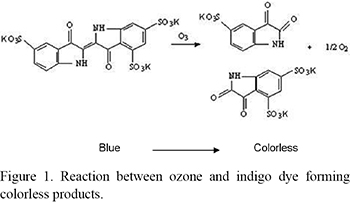Most of the problems of endodontic origin have a bacterial etiological agent. Thus, there is a continued interest in seeking more effective chemical substances that can replace the camphorated paramonochiorophenol or antibiotics as intracanal medicaments. Among the possible substances, ozone has some interesting biological characteristics: bactericidal action, debriding effect, angiogenesis stimulation capacity and high oxidizing power. The purpose of this study was to chemically evaluate the presence of ozone in sunflower, castor, olive and almond oil, as well as in propylene glycol and byproducts of ozonation, such as formaldehyde. These compounds were ozonized, inserted into empty and sterile vials, and analyzed by testing the reaction between ozone and indigo, for determining the presence of ozone, and subjected to the chromotropic acid test for determining the presence of formaldehyde. It was observed complete absence of ozone in all samples tested and presence of formaldehyde. The bactericidal and healing action of ozonized oils could be attributed to products formed by the ozonation of mineral oils, such as formaldehyde, not to the ozone itself.
Endodontics; ozone; formaldehyde

